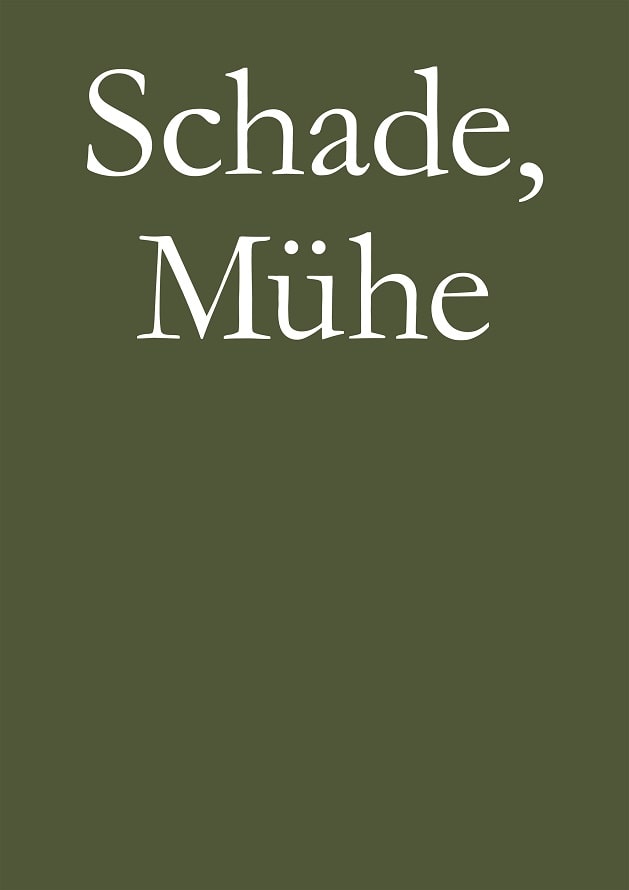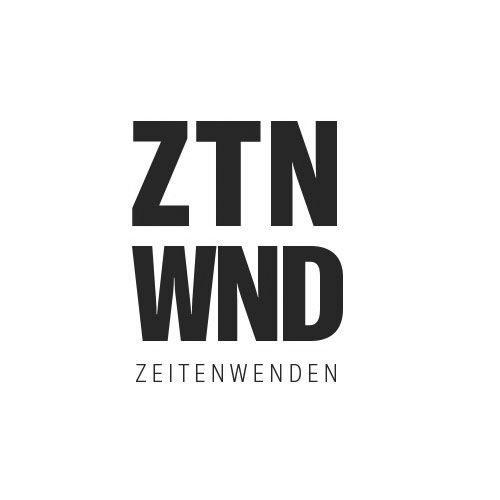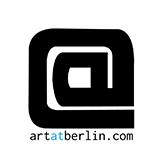Andreas Mühe and Titus Schade are two artists with a sharp eye. And an unerring precision in their respective mediums, photography and painting. Their compositions are thoughtfully arranged, finely placed pictorial worlds that appear like the long-held metaphor of the work of art as a window on the world.
Image above: Courtesy Kunstraum Potsdam
But it is not a view into immediate reality that is to be presented. Rather, Schade and Mühe insist on the artificiality of their world, or rather worlds, but without denying their truthfulness. A relationship between space, man and time as a nuanced perception of the world(s) unfolds, between dystopia and utopia, between past and future, without dissolving.
Titus Schade comes from space. His pictorial worlds show abandoned building structures and architectural entities. They resemble familiar house forms – typical, for example, are half-timbered elements – and yet they are sometimes unusually narrow and long or have a futuristic-looking component that cannot be classified. His technique is characterised by a striking, almost hyper-realistic style of painting with recognition value. The brushstroke disappears and in its precision is reminiscent of the heyday of Flemish painting as well as of digital computer renderings. Often the pictorial works appear like models or miniatures. In Three Half-Timbered Houses, 2012, or The Iron City, 2014, for example, this is evident when the house façades are mere dummies, floating in a vacuum. The work Das Regal, 2011, suggests that Schade draws on these designs as if they were a collection of components that can be recombined again and again. Here, 14 picture modules – from individual houses, industrial buildings to slabs – are neatly arranged on a shelf that takes up the entire surface of the picture. Some compartments are still free. What runs through all the house and building landscapes is that they are empty of people. Empty of people in the truest sense, for the void is noticeably visible. The pictures have a strangely abandoned atmosphere that poses a riddle. There are a few pictures of people by Schade in the exhibition – but only as painted likenesses in the picture. Even here, people are only indirectly present. A symbolic placeholder for people/life, however, seems to be the small burning candles and campfires that occasionally appear as motifs. They stand without direct relation to the rest of the picture’s content, like a quiet hint: Something is stirring. Something is still burning. There is still something.
Andreas Mühe comes from people. At the centre of his artistic work is the human being and human action, for better or for worse. In doing so, Mühe constructs his photographic images just as precisely as Schade constructs his architecture. The places Mühe shows are made and shaped by people. Their identity is linked to immediate contemporary history and the question of where power and politics can be manifested in places. Without the themes being obviously named – because their significance extends beyond the one moment – the stage-like composed images evoke an uneasy sense of foreboding. In the series Wandlitz, 2011, Mühe shows a series of inconspicuous, strongly resembling houses. Like decals, the flat façades reveal nothing of their contents. They are the former residences of the GDR state leadership – a state that dreamed of utopia and tipped over into dystopia.
In the series Biorobots II, 2021, Mühe refers to the group of (mainly) men who were sent there to “clean up” after the Chernobyl reactor disaster. Their protective clothing – which today looks like something out of a bad sci-fi film – is faithfully adopted by Mühe. However, he transfers the figures to an undefined place in the middle of an unreal landscape of concrete buildings. Is this the prospect of a world after the catastrophe?
The series Christmas Trees, 2016, shows 38 (the artist’s age in the year of creation) decorated Christmas trees, but without the obligatory, cheerful family group. Each tree is decorated differently, visibly drawn by the taste and possibilities of its time of origin. Like set pieces, the trees seem inventoried in the group. At the same time, they are highly personalised, representing the 38 Christmases from the artist’s life. As representatives of memory and pause, they symbolise years of life in all its facets.
In the exhibition, the trees enter into a beautiful, less obvious dialogue with Schade’s paintings. For in them, too, there are individual trees, especially in Das Regal, which stand ready to be placed like set pieces. Mühe and Schade are masters of the composition of image and space. Their pictorial worlds tell stories whose narratives are freely artistic and yet say much about our times. It is open-ended and stimulating whether they are images of the past or scenarios of the future.
There are two talking, who walk in utopian worlds to tell something of the past. There are two talking, who walk in utopian worlds to tell something of the future.
Excerpt from the press release by Dr Kristina Schrei
WHEN?
Vernissage: Sunday, 13 November 2022, 02:00 p.m. – 06:00 p.m.
Exhibition dates: Sunday, 13 November to Friday, 23 December 2022
WHERE?
Kunstraum Potsdam
Schiffbauergasse 4d
14467 Potsdam






